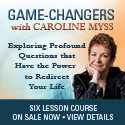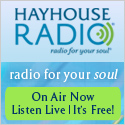The Reiki Digest for July 1, 2006
Welcome to the first issue of The Reiki Digest, a weekly roundup of news about Reiki from around the world.
This edition begins in London, where the "New Ager" column in the Telegraph turned its attention to Reiki on June 3. Columnist Judith Woods covers the main points clearly and succinctly in just a few paragraphs, going on to tell readers that Reiki can support personal change and help with health problems such as eczema, asthma, endometriosis, and migraines. She describes Reiki sessions as "slightly airy-fairy" and warns prospective recipients to check out the credentials of their Reiki practitioners, since, unfortunately, "virtually anyone can claim to be a Reiki practitioner, though they may have only completed one weekend workshop." Woods concludes on a tantalizing note, stating that "American research suggests" Reiki can help lower blood pressure, among other things, but she doesn't cite a source.
Fortunately, our talented investigative team here at The Reiki Digest was able to find some cardiac-related studies involving Reiki with just a few mouse clicks:
A 2004 study at the South Glasgow University Hospital in Scotland divided test subjects into three groups: the first received no treatment, only rest; the second received Reiki by a trained practitioner, and the third received placebo treatments by a person with no knowledge of Reiki who mimicked a Reiki session. The result: "Heart rate and diastolic blood pressure decreased significantly in the Reiki group compared to both placebo and control groups."
The Harvard Medical School's Harvard Heart Letter reported in October 2005 that a study found cardiac catheterization patients at George Washington University Hospital in Washington, D.C., felt more confident and relaxed when they received Reiki immediately before undergoing catheterization procedures.
Although the complete Harvard article itself isn't available for free online, a July 2005 Washington Post article, "Light Touch in the Operating Room," about the study is still accessible.
In addition, 13 members of the GWU Hospital cardiac lab staff received Reiki 1 training so that they could better understand Reiki; three months after the study, a follow-up survey found all respondents interested in further Reiki training, eager to receive Reiki, but somewhat reluctant to practice it on their colleagues.
The Washington Post article included a trail of clues leading to other studies:
- The Cleveland Clinic's current clinical trial using Reiki with prostate cancer patients.
- The University of Michigan Integrative Medicine Center's study on Reiki for chronic pain patients.
That led, in turn, to a June 13 Detroit News article: "Alternative Medical Therapies Can Mend Your Body", which then led us to the Valade Healing Arts Center at the St. John Hospital network in the Detroit area, and the Assarian Cancer Center, where Elena Weissman, manager of the institute's healing arts program, told the Detroit News reporter: "At Assarian, we don't treat cancer. We treat patients."
Meanwhile, in Akron, Ohio, the Akron Beacon-Journal reported on the use of Reiki for pets in its June 3 edition.
Reiki elsewhere:
Rhode Island:
“The hospital conducted an extensive research study on the impact of these treatments on customer satisfaction. The survey taken at Kent revealed that there was a "huge boost" - 38 percent - in patient satisfaction from those patients who received the integrative therapies versus those who did not.”
Mississippi:
“While scientists and skeptics have questioned Reiki's ability to provide any tangible benefit, believers of the practice claim it can promote fertility, help overcome disease, lower blood pressure and provide a general sense of well-being.”
New Hampshire:
"I don't profess to know all the answers," she said. "I just know the results I get." The same article is loaded with useful statistics about the growing use of complementary and alternative healing methods.
Texas:
“Reiki is another way patients are trained to help in the healing process.”
Pune, India
“I was advised reiki during my pregnancy and within two weeks of undergoing this, I developed a positive attitude towards life.”
Indiana:
“Reiki healing: Woman mends ‘life force' from Bedford home”
Israel (by way of India)
Reiki Working for Mideast Peace
Iowa:
Reiki Provides Alternative Relief in Reinbeck
Celeb-Reiki: Reports of Reiki among the famous
Boy George's Dad, the late Jerry O'Dowd, became a Reiki practitioner while helping his controversial son recover from a drug addiction.
Whitesnake's David Coverdale travels with a Reiki Master – his personal assistant.
Duncan James, formerly of the band Blue, is now a Reiki practitioner:
Actor Matthew Broderick is a Reiki practitioner, according to several sources.
(Note: If you are a famous person who uses Reiki, either as practitioner or recipient, please let us know. If you are a practitioner with a famous client, of course, you should respect that client's privacy as you normally would.)
But wait: there's more: See the post below for a review of the new book Reiki: A Comprehensive Guide, by Pamela Miles.
And still more: The Reiki Digest is dedicated to serving the Reiki community, so we encourage your comments and hope this site will be used extensively for discussions about Reiki. (Please note that all comments are moderated to filter out comment spam.)
We'll be back next week with another edition of The Reiki Digest.































